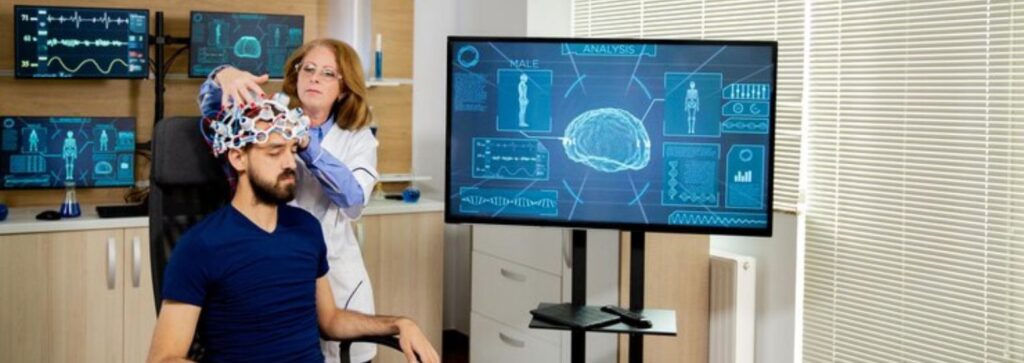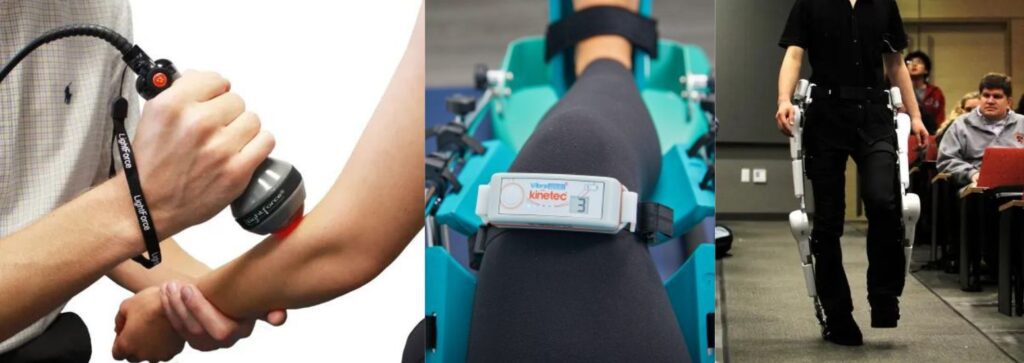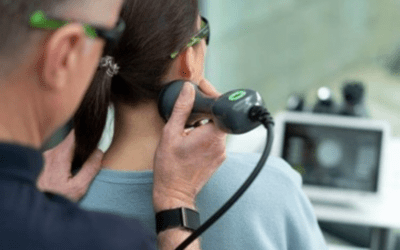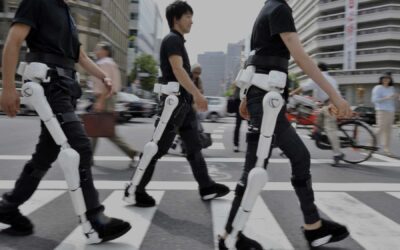Epilepsy is the fourth most common neurological disorder in the world. Epilepsy is a brain disorder that results in multiple seizures. Due to the sudden change in the electrical impulses within the brain, the affected person may experience a sudden behaviour change. Typically, these electrical impulses follow a specific pattern that helps the brain function and relay communication throughout the rest of the body. However, with the onset of epilepsy, these electrical impulses lose their mark and become imbalanced.
Even the slightest change in the pattern of electrical impulses can significantly affect the body. In epilepsy, these electrical impulses become imbalanced enough to cause recurring seizures. The sudden bursts of electrical impulses may result in the affected person struggling with consciousness and difficulty performing basic movements.
Medical Devices and Rehabilitation Technologies in Treating Epilepsy
Robotic Therapy

The most effective treatment device for epilepsy is the robot therapy.
Cyberdyne HAL is the only approved system of its kind that uses non-invasive sensors to detect the weak bioelectrical signals that appear on the wearer’s skin surface. The signal which travels from the brain and spinal cord to the muscle, contains information about how the person wants to move. The signal is then transformed into a motorised response. The motion is therefore a deliberate and controllable activity in response to the desire to move from the patients themselves.
Vagus nerve stimulation
This is one of the most common procedures used for epilepsy. A small device is attached to the patient’s chest and connects to a wire inserted under the skin. The device connects with the Vagus nerve, which sends electrical impulses to the nerve.
Vagus nerve stimulation aims to lessen the severity and frequency of the seizures rather than attempting to eliminate them, which is impossible.
Deep Brain Stimulation
Another popular procedure for epilepsy is deep brain stimulation. Similar to VNS, an electrical device is used. However, this particular device is placed in the chest and connects its wires directly to the brain. Electrical impulses are sent to the brain through these wires in an attempt to lessen the frequency and severity of the seizures. It must be noted that this procedure is relatively new for the rehabilitation of epilepsy and must be used with caution; however, health professionals may recommend this procedure for the sake of trying and further research, ensure that they explain the process in full detail and make the patient aware of the benefits and risk associated with this procedure.
Responsive Neurostimulation

Responsive Neurostimulation is a technique that is being increasingly used for the rehabilitation of epilepsy patients. Responsive Neurostimulation also uses a device similar to a pacemaker. This device analyses brain activity and the frequency and patterns of the electrical charges.
If the device detects a severe change that indicates an oncoming seizure, it automatically delivers an electrical charge or prescribed medicine to eliminate the threat of the attack. This procedure is widely used to decrease the frequency of seizures; however, it is always good practise to consult the doctor at length and consider all details and factors before agreeing to the procedure.
Leading Products such as Cyberdyne technology, Lightforce Lasers, and Vibramoov Therapy can potentially address neuromuscular and neurological diseases like Epilepsy.
Cyberdyne HAL – Using the feedback system inherent in your body, your voluntary movements assisted by Wearable Cyborg HAL will lead to improvements in your gait patterns and walking function even in the chronic stages of the disease.
Lightforce Lasers – are effective in treating acute and chronic neuro-muscular conditions. Bringing pain under control quickly helps the healing process and usually helps promote better outcomes. Patients often report improved sensation, including a therapeutic warmth and some analgesia immediately after the treatment. It is an evidence-based laser therapy.
Vibramoov – preserves sensory-motor interaction, promotes motor recovery, allows locomotor training, and regulates muscular activity. The treatment is not just transmitting voluntary command signals from the human brain to the musculoskeletal system via the spinal cord and peripheral nerves, but more so on the return of feedback from the sensation of actual movement to the human brain.
Epilepsy is a long-lasting, life-altering disease, but if the patients are well-adjusted to their diagnosis and new life, they can mostly live reasonably normal lives!
So, connect with us at www.rehabmodalities.com to learn more about our rehabilitation therapy.
To know more write to us: info@rehabmodalities.com



